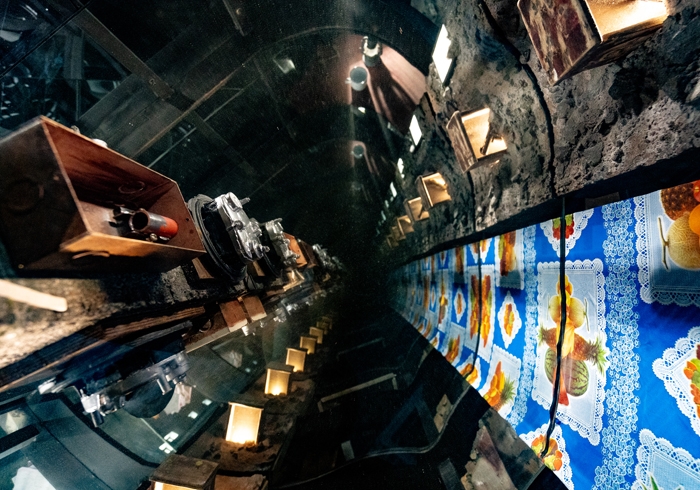ArtReview sent a questionnaire to artists and curators exhibiting in and curating the various national pavilions of the 2019 Venice Biennale, the responses to which will be published daily in the lead-up to the Venice Biennale opening on 11 May.
Mark Justiniani is representing the Philippines. The pavilion is in the Arsenale.
What can you tell us about your exhibition plans for Venice?
The plan is to create an excavation site for structural foundations of three main edifices. The site will also remind one of archeological diggings with the main sections divided into several segments. The shapes are biomorphic and wrapped along the perimeters with metal, they look like armours of huge bio-mechanical organisms sprawling like an archipelago in the entire area. These island-like formations are covered on top with glass, transparent membranes that reveal cross sections of an inner environment. These sections replicate and form structures within communities. They tell stories of a nation struggling to stay afloat, trying to make sense of its history and identity, hoping to be whole despite the fragmentation.
What does it mean to ‘represent’ your country? Do you find it an honour or is it problematic?
It is an honour to represent my country but it could become problematic when one thinks too much about representation. The concern is to address the demands of the work. The task is daunting because of its scale – weaving everything together becomes quite difficult. So when production gained momentum, it was best to listen to the work and follow its lead. Perhaps the focus will shift when we begin working on site and we get a feel of the whole event.
Is your work transnational or rooted in the local?
The work is rooted in the local. The narratives imbedded in it are located in specific places in the Philippines. The images are recognisable and familiar to almost everyone and one could deduce, understand and find similar situations in other countries. The work also has main elements that extend beyond the local.
How does having a pavilion in Venice make a difference to the art scene in your home country?
The first Philippines Pavilion at the Venice Biennale was in 1964 and it took 51 years for the next participation to happen in 2015. The Philippines’ art scene has continually grown without regular participation in the Biennale but in the last four years it has generated a lot of attention. The Pavilion space allows for constant engagement with the international art scene. The exchange of ideas in this huge platform definitely adds to the already vibrant discourse in the local art community.
You’ll no doubt be very busy, but what else are you looking forward to seeing?
Since it is my first time to see the Biennale, I’m looking forward to seeing the works in the other pavilions, as well as the curated shows.
The Venice Biennale runs 11 May – 24 November
